Those who stay in our buildings will know that every Landmark has its own History Album, a careful researched but readable account of the building's history and who once lived there. Just as important, it also includes a record for posterity of what Landmark has done, and learned, during its restoration. Such albums are unique to Landmark holiday lets, and they go back to the trust's earliest days – the concept of the albums came from Landmark's founder John Smith in the 1960s. He envisaged a collection of interesting facts about the building, to add to the enjoyment of those staying there, to be collated by an in-house historian sometimes helped by other specialists. Over the years, the albums have become more formalised, and the research that goes into them plays a crucial role in the understanding that underpins any Landmark restoration project. They’re still a slightly idiosyncratic collation of things I'm curious to find out about a building myself, and that I hope will interest Landmarkers too.
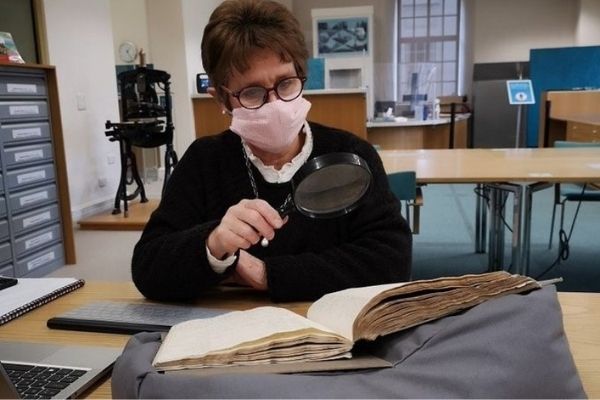 Researching in a time of Covid: and early 17th century accounts book in Barnsley Archives.
Researching in a time of Covid: and early 17th century accounts book in Barnsley Archives.
'Every album tells a different story arrived at through different paths'
So how to go about researching a historic building's past from scratch? Of course, there are as many answers to that question as there are Landmarks. Every album tells a different story arrived at through different paths. It’s a matter of finding the initial thread to follow. For a listed building, the listing description (available online) can be a good starting point. The older listings may not always be very accurate, but any listing will still tell you of any famous people or events associated with a building, and sometimes about past ownership – private, ecclesiastical, civic etc – and hazard a guess at the date. From there you might turn to the map evidence in local record offices: are there estate maps, early Ordnance Survey maps, even the early modern maps by the likes of John Speed?
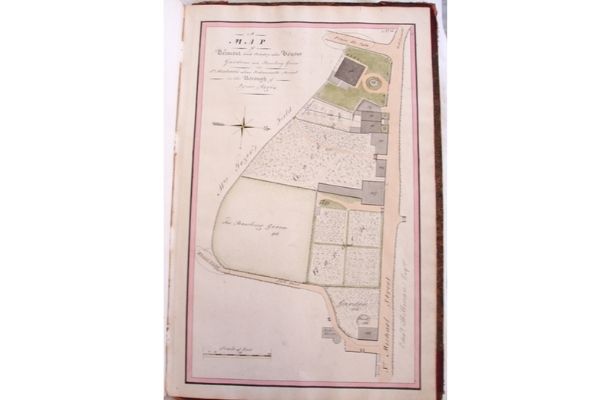
1824 survey map of Belmont, Lyme Regis.
The Tithe Maps, done in the 1840s as the Established Church tried to re-establish its rights to tithe payments, may help with land ownership. 19th-century and later estate sales particulars can also help: often they give a description of the rooms in a house as well as the land it owned. Inventories and wills sometimes help too. For the people who lived there, the decennial census records from 1841 to the present day are another useful tool, the names of ordinary people as much as the great and the good. These too are all online (although frustratingly behind paywalls). They can be hard to interpret as the census recorders didn’t list exact addresses, just walked along a street recording the inhabitants in order, but if you have a family name to go on, with a little practice they aren’t hard to decode. I’ve had great satisfaction in reconstructing the families that lived in, say, Shore Cottages or Princelet Street. Then you can also start searching the online newspaper databases and trade directories to see if anything shows up there about the residents – like the sad deaths from scarlet fever of Keeper Ayrton’s little girls when the family was living at Queen Anne’s Summerhouse These are the main go-to resources for any house historian – but beyond these, it gets even more interesting. I’ll always trawl secondary sources to understand the local history and context, but best of all is heading to bespoke searches of the catalogues for the primary sources belonging to that building alone. Today, almost all the catalogues of record offices across the country are easily searchable through the National Archives website.
'The thrill of the detective work never goes away'
Here's when the real fun begins. A day spent in a local office is always a treat, even if there's no guarantee of finding anything of use. The thrill of opening one of the grey cardboard storage boxes or untying the tape around a roll of receipts or maps never goes away - there's a sense of communion with the person who wrote the words in faded brown ink, in writing that may be flowing copperplate, crabbed 18th-century scrawl or (despondency given my own poor palaeographic skills) that dratted earlier secretary hand. The paper is yellowed and often watermarked, and I confess to sometimes smelling it, just to breathe in that whiff of wood and tobacco smoke, lit long ago in unknown rooms by unknown hands. The writer may have been an efficient land agent, or a bored clerk coping out earlier documents for a legal case, or a gossipy lady writing her diary. The content can be lists of estate payments (still fascinating as social history, and that might yield, as examples, the name of the first dairy maid at Cobham Dairy, or the builder of Keeper's Cottage) or rent rolls or boring land conveyances full of stock phrases about 'messuages' and tenements, that have to be skimmed to extract the key nugget of information, like a change of tenant.
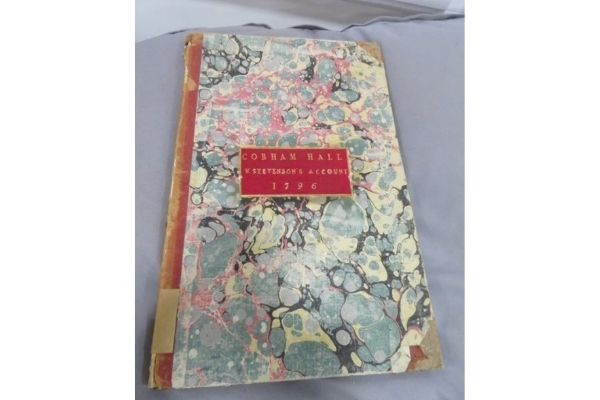
Estate accounts provided the name of Sarah Hemmings, first dairymaid at Cobham Dairy in Medway Archives.
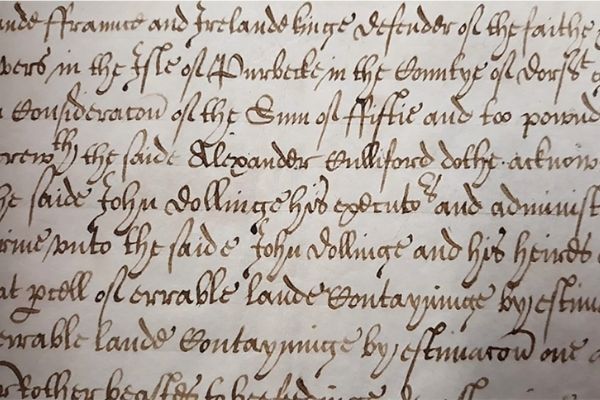
Researching John Hollings, a 17th-century resident of Dunshay Manor.
Bush Cottage's album was one that gave particular satisfaction, a humble, unremarkable little cottage whose entire history emerged from searching copyhold leases, field maps and conveyances. There are also the ephemera -the posters for village fetes of long ago, press cuttings, photos, sometimes as for Cowside even a folk song that records the names of the residents of a particular building.
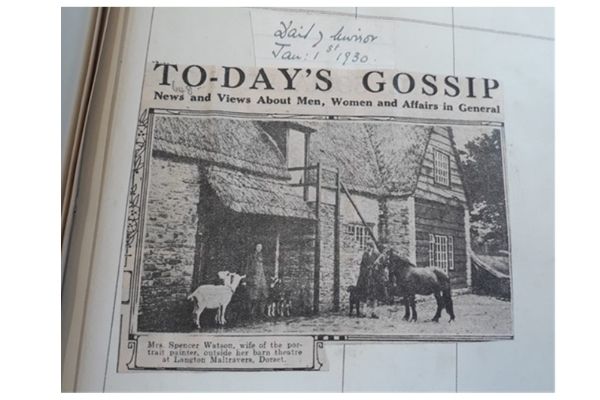
Ephemera: an old press cutting can tell a lot about a building at that time.
Or something intensely personal, like William Beckford's description of his visit to Hackfall (The Ruin) as a moody and heartbroken young man, looking for Merlin in every mossy stump. Such finds are the raw materials for each and every History Album, and each and every Landmark restoration. The thrill of the detective work never goes away, as anyone who researches their own house knows. As for researching my own old house - that always gets pushed back for another day!
Landmark history albums